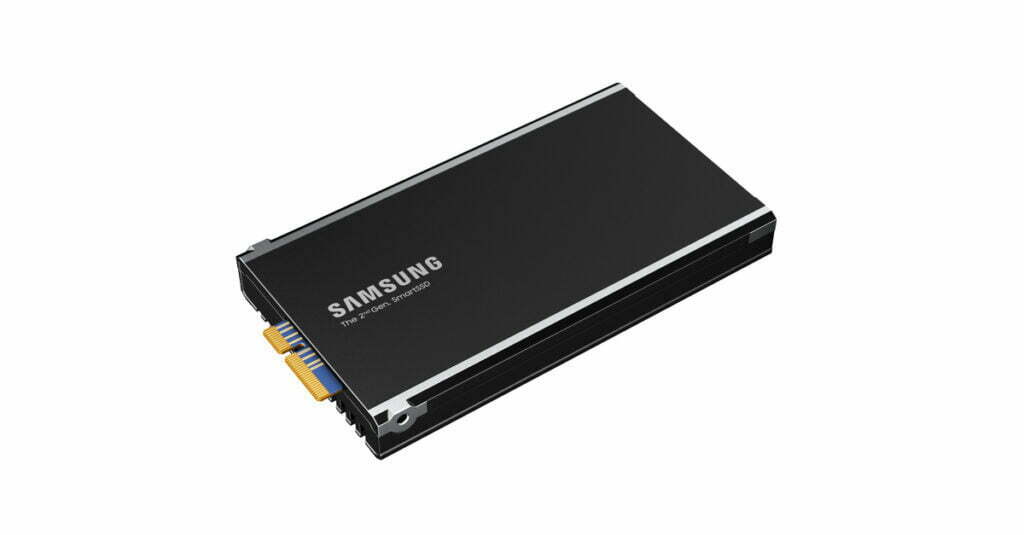The second generation of Samsung Electronics’ Smart SSD, a drive designed for businesses and capable of much more than just data storage, has been made public.
The new SSD is a computational storage device (CSD), which means it processes data locally to reduce bottlenecks caused by the need to transfer data between storage and the CPU, GPU, and RAM.
The second-generation SmartSSD, powered by an AMD Xilinx SoC, is claimed to reduce processing time for demanding database queries by 50% and energy usage by up to 70% when compared to conventional non-CSD configurations.
Is computational storage the future?

For a number of years now, computational storage has been heralded by industry players as one of the upcoming breakthroughs in computing.
Such systems can be divided into two categories: those that embed processors directly into the storage device (like Samsung’s SmartSSD) and those that transfer compute activities to a storage accelerator that is situated close to the storage drive.
Although computational storage is not suitable for all use cases, it has the potential to significantly speed up systems whose I/O performance rather than their compute performance is the bottleneck.
In an interview with TechRadar Pro last month, Richard New, VP of Research at Western Digital, stated that “there is clearly a broad class of applications that benefit from offloading compute functions from a main CPU to a more efficient processing engine that is more suited to the specific problem of interest.”
“In the context of storage, we can classify applications like database acceleration, video transcoding, and compression as belonging to this group. While avoiding needless I/O and data transfers throughout the system, a video transcoding device and storage device can help a video server stream content more effectively at various quality levels.
But creating a successful CSD hasn’t been simple. The relatively low-performance cores that can be built into storage are unable to match the performance offered by a standard CPU since SSDs typically use 100% of their power and cooling resources to serve their primary job.
But thanks to improvements in CPU and software, Samsung seems to have, at the very least, partially surmounted these obstacles.
The business originally introduced the SmartSSD in 2020 and has since sold the drive to several “major IT firms.” The South Korean company anticipates a significant increase in the market for CSDs over the coming years.
The first-generation SmartSSD’s commercialization in partnership with AMD demonstrated the enormous potential of the computational storage market, according to Jin-Hyeok Choi, Executive Vice President and Head of Memory Solution Product & Development at Samsung.
As we broaden the horizons of the next-generation storage market, Samsung will be able to quickly handle growing customer needs in the database and video transcoding sectors thanks to the increased processing functionality of the second-generation SmartSSD.
When the second-generation gadget will be available in stores is still unknown.


